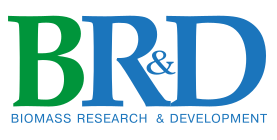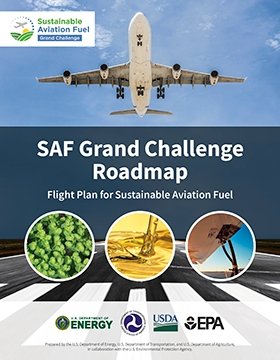
The Enabling End Use Action Area focuses on research, development, demonstration, and deployment activities to facilitate the end use of sustainable aviation fuel (SAF) by civilian and military users. The action area focuses on addressing critical barriers and requirements for safe and cost-effective use of SAF via standards development and critical R&D and analysis. The workstreams include SAF qualification, reaching 100% drop-in SAF, fuel performance evaluation, and SAF integration with existing fuel distribution infrastructure. Efforts spanning these key areas will address critical barriers to SAF deployment.
Key Actions and Workstreams Supporting SAF Enabling End Use
|
Download the full version of the SAF Grand Challenge Roadmap: Flight Plan for Sustainable Aviation Fuel. |
- SAF evaluation, testing, qualification, and specification: Supporting fuel qualification via the ASTM D4054 (Standard Practice for Evaluation of New Aviation Turbine Fuels and Fuel Additives) Clearinghouse can alleviate the testing burden on fuel producers.
- Enable use of drop-in unblended SAF and SAF blends up to 100%: Work to develop specifications for 100% SAF, both in neat form and blended with other SAF, enables additional opportunities for fuel producers and suppliers to simplify distribution logistics and reduce risk along the supply chain.
- Investigate Jet A fuel derivatives offering performance or producibility advantages: Understanding the advantages and challenges of novel jet fuels with unique performance differences, such as greater energy density, will help identify reasonable opportunities that may exist for such fuels.
- Integrate SAF into fuel distribution infrastructure: Although the focus of the SAF Grand Challenge is on drop-in SAF, fully fungible with existing supply and distribution infrastructure and aircraft, there are logistical questions related to fuel blending and efficient integration into existing fuel supply infrastructure that must be addressed for scaling up SAF delivery to airports.
2030 End Use Impact Highlights
Enable SAF Use up to 100%
Currently, SAF is required to be blended (at a maximum of 50% by volume) with petroleum jet fuel, but the Federal Aviation Administration (FAA) is working with federal partners and industry to define drop-in jet fuel requirements for synthetic aviation turbine fuels that can be qualified at levels up to 100% without the need for blending with petroleum. As an element of a coordinated approach to enable drop-in SAF that can be used up to 100%, one specific area of investigation being pursued by FAA is the use of cycloparaffins to promote elastomeric seal swelling and their potential to replace aromatic compounds. Qualification of 100% SAF could enable SAF producers to reduce cost and simplify logistics of delivery, allow maximum flow of SAF through constrained supply infrastructure, and increase the emissions benefits of SAF use, all of which will contribute to the 2030 goal.
Integrate SAF Into Fuel Distribution Infrastructure
Distribution and delivery infrastructure gaps, capacity challenges, and integration needs for SAF are anticipated but not fully understood. The U.S. Department of Transportation/FAA will support analysis and feasibility studies to assess SAF integration potential and challenges for SAF into current infrastructure, including delivery to pipeline systems and airports/end users. An understanding of the technical and capacity challenges and how these can be addressed safely and efficiently will be critical to supporting the 2030 SAF production goal of 3 billion gallons per year.

